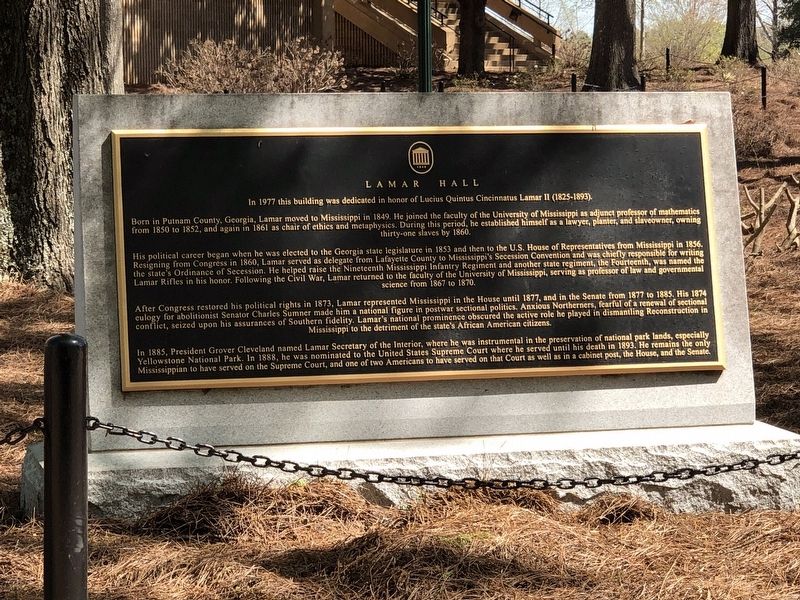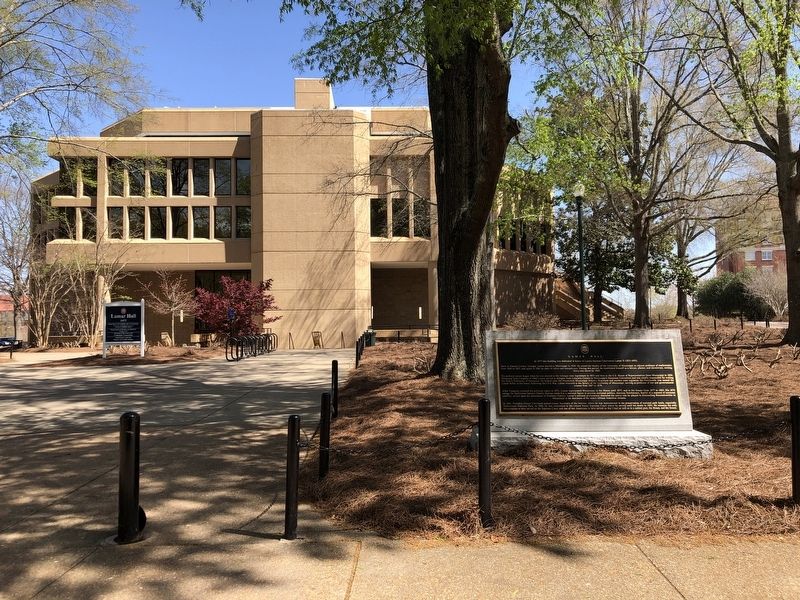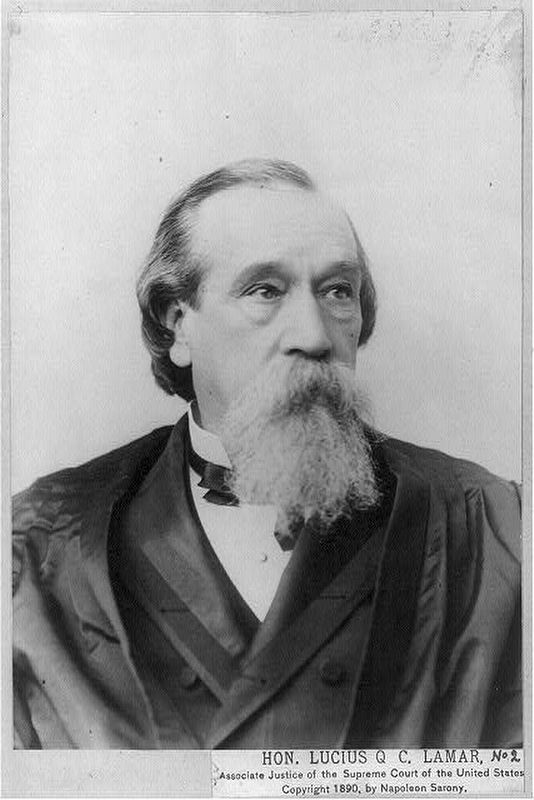University in Lafayette County, Mississippi — The American South (East South Central)
Lamar Hall
Born in Putnam County, Georgia, Lamar moved to Mississippi in 1849. He joined the faculty of the University of Mississippi as adjunct professor of mathematics from 1850 to 1852, and again in 1861 as chair of ethics and metaphysics. During this period, he established himself as a lawyer, planter, and slaveowner, owning thirty-one slaves by 1860.
His political career began when he was elected to the Georgia state legislature in 1853 and then to the U.S. House of Representatives from Mississippi in 1856. Resigning from Congress in 1860, Lamar served as delegate from Lafayette County to Mississippi's Secession Convention and was chiefly responsible for writing the state's Ordinance of Secession. He helped raise the Nineteenth Mississippi Infantry Regiment and another state regiment, the Fourteenth, was named the Lamar Rifles in his honor. Following the Civil War, Lamar returned to the faculty of the University of Mississippi, serving as professor of law and governmental science from 1867 to 1870.
After Congress restored his political rights in 1873, Lamar represented Mississippi in the House until 1877, and in the Senate from 1877 to 1885. His 1874 eulogy for abolitionist Senator Charles Sumner made him a national figure in postwar sectional politics. Anxious Northerners, fearful of a renewal of sectional conflict, seized upon his assurances of Southern fidelity. Lamar's national prominence obscured the active role he played in dismantling Reconstruction in Mississippi to the detriment of the state's African American citizens.
In 1885, President Grover Cleveland named Lamar Secretary of the Interior, where he was instrumental in the preservation of national park lands, especially Yellowstone National Park. In 1888, he was nominated to the United States Supreme Court where he served until his death in 1893. He remains the only Mississippian to have served on the Supreme Court, and one of two Americans to have served on that Court as well as in a cabinet post, the House, and the Senate.
Erected by University of Mississippi.
Topics. This historical marker is listed in these topic lists: Education • Government & Politics • Law Enforcement • War, US Civil. A significant historical year for this entry is 1825.
Location. 34° 21.975′ N, 89° 31.893′ W. Marker is in University, Mississippi, in Lafayette County. Marker is at the intersection of Grove Loop and Alumni Drive, on the right when traveling west on Grove Loop. Touch for map. Marker is at or near this postal address: 615 Grove Loop, University MS 38677, United States of America. Touch for directions.
Other nearby markers. At least 8 other markers are within walking distance of this marker. Society Of Professional Journalists Historic Site in Journalism (about 400 feet away, measured in a direct line); "Dead House" (about 500 feet away); Barnard Observatory (about 500 feet away); Documenting the Blues (about 600 feet away); Hilgard Cut (about 600 feet away); a different marker also named Barnard Observatory (about 600 feet away); Ventress Hall (about 800 feet away); Lyceum — The Circle Historic District (approx. 0.2 miles away). Touch for a list and map of all markers in University.
More about this marker. It is among several plaques the university has installed to provide greater context about its past, particularly in relation to slavery.
Credits. This page was last revised on April 6, 2023. It was originally submitted on April 5, 2023, by Duane and Tracy Marsteller of Murfreesboro, Tennessee. This page has been viewed 62 times since then and 10 times this year. Photos: 1. submitted on April 5, 2023, by Duane and Tracy Marsteller of Murfreesboro, Tennessee. 2, 3. submitted on April 6, 2023, by Duane and Tracy Marsteller of Murfreesboro, Tennessee.


